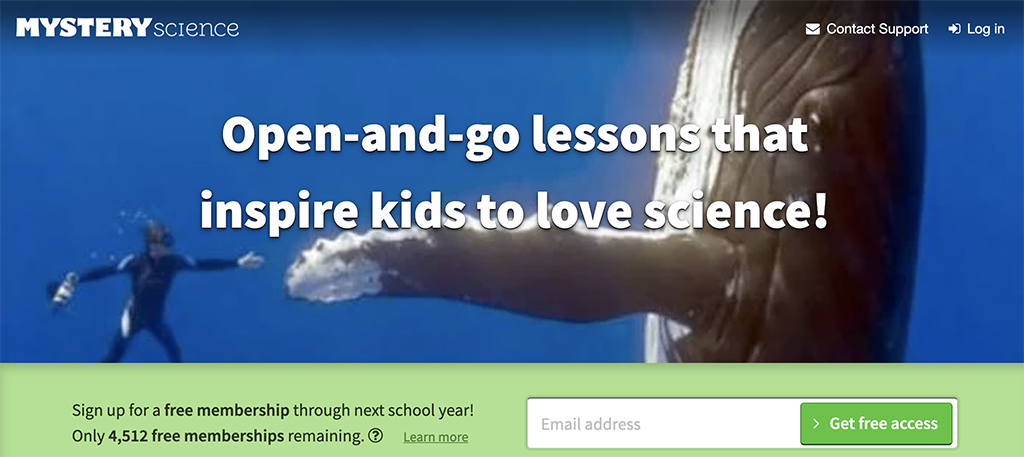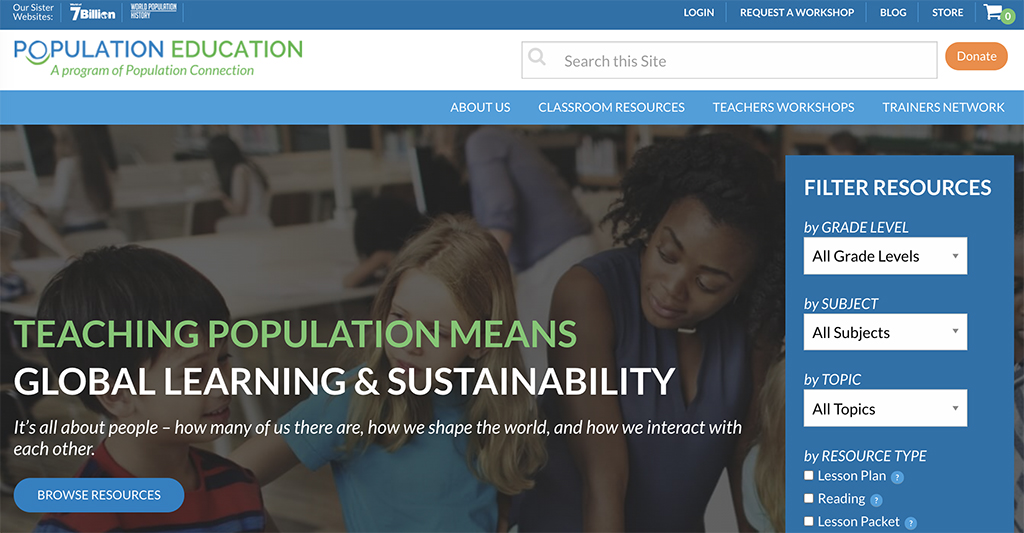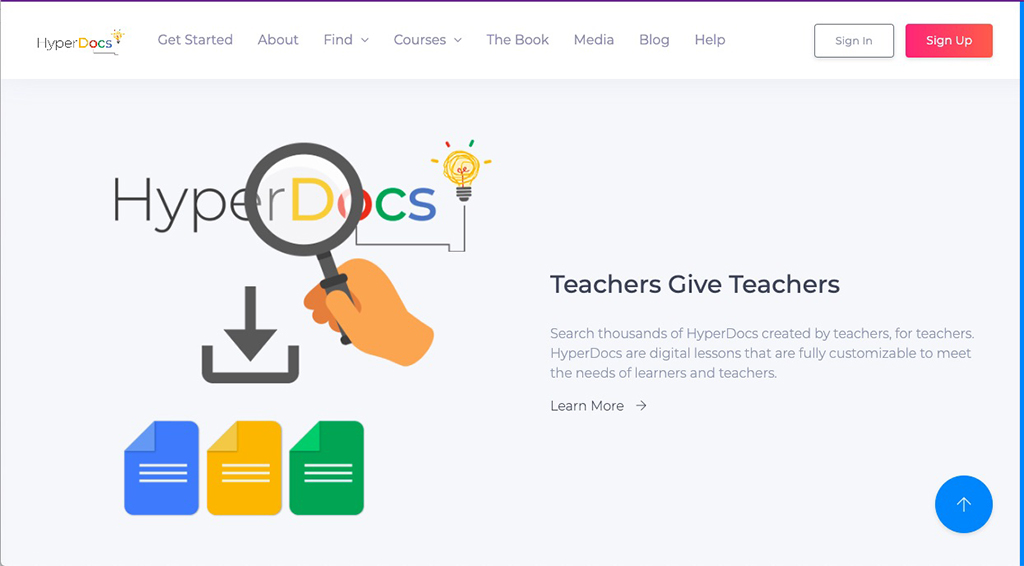Brief
Online Digital Science Resources
A Survival Toolkit for Teaching Through a Pandemic
When COVID-19 initially hit California, it seemed like all would be back to normal in a few weeks. Shortly thereafter, however, we were informed that classes would move to be 100% online. In this Brief, we will share how, on a rapid timeline, we modified for online learning a curriculum and instruction course geared toward elementary science teachers.
The majority of our students are precredentialed grade K–8 educators working as part- or full-time teachers in private schools and afterschool programs, and some of our students plan to seek teaching jobs in local urban California public schools. Many of these schools have persistently faced instructional barriers—and during the COVID-19 pandemic, time constraints likely allow for less than the California science-instruction average of 27 minutes per day (Education Trust West 2015).
We identified three resources to use with the elementary and middle school precredentialed teachers in our course. Below we describe each resource and how we used them.
Mystery Science
Mystery Science is a free-for-a-year, Next Generation Science Standards (NGSS)–aligned curriculum for grade K–5 teachers. No textbook purchase is required; everything is online. After registering, users have access to a range of science videos, including ideas for addressing student questions, lesson plans, digital activity sheets, hands-on activities, units, digital assessments, and additional resources. Videos feature an expert science teacher, have cues for the user to ask their students a question or check for understanding, and can be adapted to different situations. The lessons range from five-minute mini-lessons to full units that can be integrated into Google Classroom.

Course application
Teachers in our course were given an assignment to select a five- to 20-minute hands-on Mystery Science lesson and teach to their peers. They were given the option to teach the lesson as is, or to make adaptations. Peers then provided feedback on how to improve in future implementations of the chosen lesson. Many teachers selected hands-on lessons that use household materials, whereas others chose to use YouTube videos and photos in their lessons. The goal was to provide the opportunity to practice an online lesson that participating educators could immediately teach in their online school or afterschool settings. The intent of this assignment was to expose teachers to the diversity of lessons available and give them practice modifying delivery of these lessons through teaching their peers and providing feedback to others. One teacher in the class remarked to peers, “I liked how you taught that lesson and made it fit your students. I am going to use it for my class and change it like you did!”
Applying to the online classroom
We found our grade K–2 teachers primarily used Mystery Science lessons as demonstrations for the whole class, sometimes assigning short, five-minute homework assignments for students to do with parents or on their own. Our grade 3–5 teachers tended to assign different five-minute lessons to small groups, with students in each group becoming experts on a specific component of the overall lesson. Then in mixed groups, expert students deepened their own understanding by sharing their new knowledge and broadened their understanding of the topic by learning from others. Similar strategies were used by teachers in afterschool programs and with mixed-age groups.
Population Education
Population Education is a nonprofit that provides NGSS-aligned, hands-on demonstrations, lesson ideas, and lessons for grades K–12, as well as science content resources about human population and its ecological impacts on resources. When COVID-19 hit, a Population Education educator supported our course redesign by providing some customization, including creating a 75-minute webinar to use in our course. Population Education’s offerings were particularly useful for our grade 6–8 teachers.

Course application
We asked students to watch one hour of lesson demonstrations available from Population Education. Based on interest and grade level, the precredentialed teachers could choose which lessons they watched. Then they completed an online feedback form provided by Population Education. We created this asynchronous assignment to provide teachers with ideas for short mini-lessons, longer lessons, and larger units on human population impacts. The science content lessons were especially relevant given our COVID-19 experiences. The precredentialed teachers were able to make personal connections with the empty grocery store shelves they saw during the pandemic and were able to make connections to the limited resource issues explained in the Population Education science lesson content.
Participating teachers commented that watching the videos provided useful ideas for how online resources can support adding real-world issues and contexts to science curriculum. However, they noted that they had to spend time adapting the resources to their context because the videos were designed as professional development references for teachers, not take-and-teach lessons. Overall, however, this resource provided innovative lesson ideas.
Applying to the online classroom
Teachers participating in our course learned that some specialty online resources, such as Population Education, have education associates who are eager to help teachers tailor available online resources to their specific needs and interests.
HyperDocs
HyperDocs are digital documents—created using Google Slides, for example—in which all components of an interactive digital learning experience are included in a single file. Within a single slideshow, students are given hyperlinks to multimedia resources they need to complete the learning. Done well, HyperDocs are more than a platform for delivering content; they also provide structure to facilitate and engage students’ learning.

Hyperdocs can be used to facilitate actively student voice and dialog during the learning process, collectivize student learning, and allow students to process and express learning in a variety of ways.
Course application
To demonstrate the utility of HyperDocs, we created a sample HyperDoc lesson using a template on a topic of general interest (fake news) to give course participants the opportunity to interact individually and collectively with the HyperDoc as both learners and teachers. After engaging in the learning experience asynchronously, participating teachers engaged in discussion about their experience, how they could use HyperDocs in their own teaching, and how multimedia can be used as an active learning scaffold for their students. They also developed an eye for how some embedded resources were worthwhile, whereas others felt like busywork. Additionally, they noticed how HyperDocs can be a platform for student choice, rather than merely a worksheet. Precredentialed teachers in our course experienced how using HyperDocs can give them control over their learning process and provide students with opportunities to demonstrate what they learned.
Applying to the online classroom
Some science HyperDocs are premade and can be used immediately. Others can be adapted, or you can create your own. Students can even be asked to design their own HyperDocs as a way to demonstrate their learning.
Challenges and limitations
Through the process of integrating these resources into courses for precredentialed teachers, we identified some challenges and limitations that are worthy to note:
- There is a learning curve to using these resources and mistakes will be made in the learning process.
- Culturally sustaining pedagogy (Paris and Alim 2014), social justice action, and differentiation for diverse learners were typically not addressed in the online resources we explored, nor the ones we used. This provided an opportunity for discussion; however, these important topics were addressed in our course in ways that are outside the scope of this Brief (Seiki 2018; Seiki, Dominguez, and Asato, Forthcoming).
- These resources are tools for teaching, as opposed to replacements for the role the teacher plays in student learning. It is critical for teachers to adapt these resources to their learning plans and for their students, as opposed to using them exactly as is.
Conclusion
Anecdotal findings suggest that online resources can support precredentialed teachers in developing their skills in lesson scaffolding, pedagogical thinking about the learning process, and reducing science teaching anxiety. Teachers in our course also developed as online science teachers, capable of adapting resources to meet the needs of their future classrooms—thus preparing them to enter the teaching profession with curriculum in hand, better prepared for the variety of conditions and circumstances they will likely encounter.
Sumer Seiki (sseiki@usfca.edu) is an associate professor affiliated with University of San Francisco in San Francisco, California. Jolynn Asato (Jolynn.asato@sjsu.edu) is a lecturer at San José State University in San José, California.
Middle School Elementary High School Informal Education Postsecondary Pre-service Teachers



